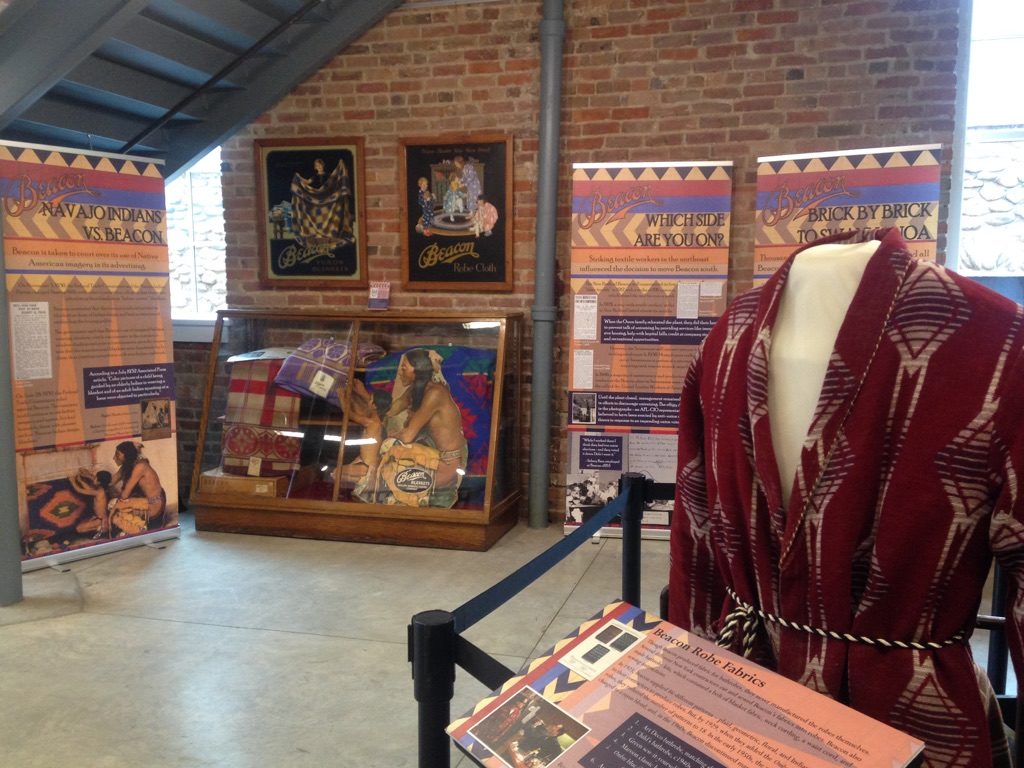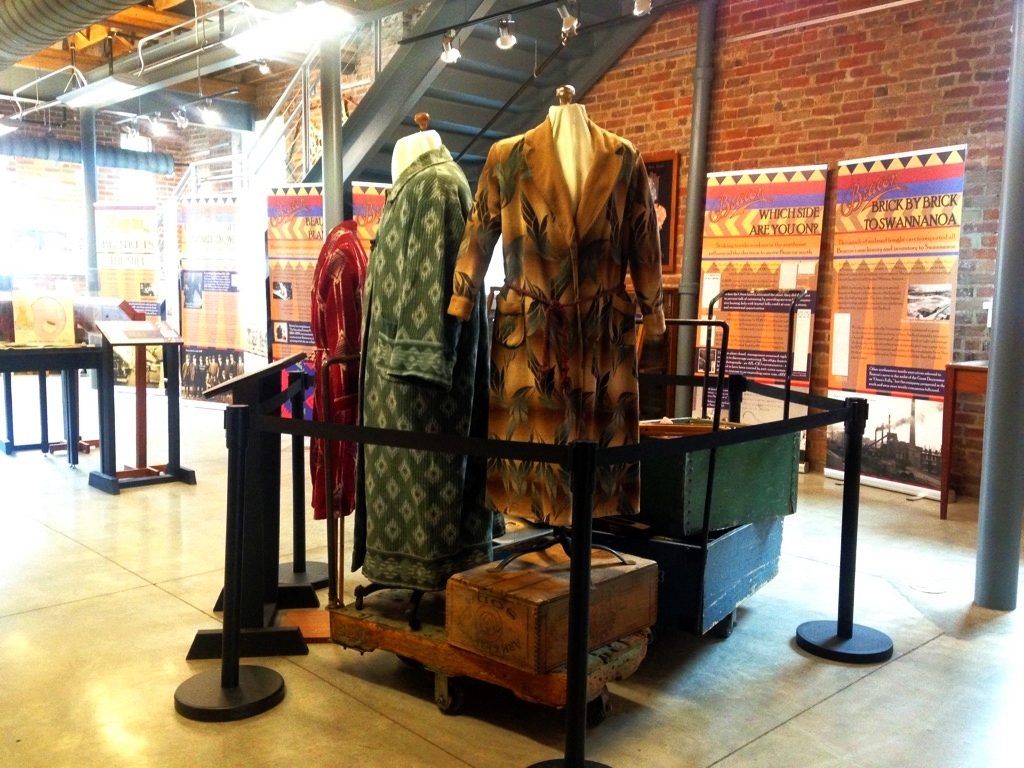
April 13 – November 7, 2019
Beacon Manufacturing Company operated in Swannanoa from 1924 – 2002 and was once the largest blanket manufacturer in the world. Today, many of their beautiful blankets are collector’s items.


This summer, the Swannanoa Valley Museum is exploring the story of the textile industry in Western North Carolina through its new exhibit “Beacon Blankets: The Mill.” This multimedia exhibit delves into the history of Beacon Blankets, a New England textile company that migrated to the town of Swannanoa, near Asheville, North Carolina, during the Depression. The Beacon Manufacturing Company was once the largest blanket manufacturer in the world and today, many Beacon blankets are collector’s items. The exhibit highlights several aspects of Beacon’s history, including its controversial use of the term “Indian Design” when advertising its blankets, workers’ striking and unionizing efforts, and the lives and culture of Beacon’s Swannanoa community. These topics are explored through banners, historic footage, textile and blanket displays, activities for children, and more.
About the Beacon Manufacturing Company
Originally located in New Bedford, MA, Beacon Blankets moved its entire operations to Swannanoa in the midst of the Depression under the guidance of the company’s owner Charles D. Owen II.
Owen’s decision was representative of an era in which many northern companies moved their manufacturing south to gain greater access to cheap labor and resources such as water, cotton, and timber. The move was likely also motivated by increased union activity in New Bedford, Massachusetts, which Owen, like many northern factory owners, hoped to avoid in southern communities.
In 1936, after the massive effort of moving machinery and infrastructure from north to south, Beacon Manufacturing completed its new 1 million-square-foot plant in Swannanoa, heralding an era of prosperity for the company. Beacon became the world’s largest mill, and at its peak, the giant factory employed 2,200 people. The company came to be famous for its use of vibrant colors and the Ombre design process, which added shades of the same color to blanket patterns.
Beacon transformed Swannanoa into a mill town with company-owned houses and company-sponsored entertainment and sports teams. While amenities such as mill village housing were provided as a strategy to discourage workers from organizing, the bustling, close-knit community that formed around the mill is fondly remembered by former residents. In a 2012 interview, Joan Barnwell recalled the ways in which Swannanoa thrived during Beacon’s heyday, saying, “We had a department store, we had a furniture store. … We had a theater and … two drugstores.”
Multiple generations of Swannanoa Valley residents worked at the mill until its closure in 2002. In 2003, an arsonist set fire to the building, burning it to the ground. Today, the former mill site is an open field situated next to historic mill village housing, now private residences. While the fate of the site is uncertain, several entities are working to preserve the memory of Beacon’s history in Swannanoa. The Swannanoa Valley Museum maintains collections related to Beacon, and its 2019 exhibit is part of ongoing efforts to educate the public about the history of the mill and its workers.
Visit Wednesday – Saturday, 10:00am – 5:00pm
PRESS

Swannanoa Valley Museum honors Beacon blankets
Mountain Xpress, April 11, 2019 by Thomas Calder
Black Mountain News, April 10, 2019 by Fred McCormick